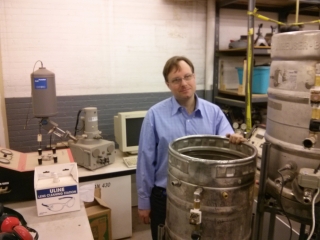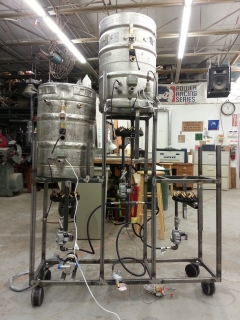Design Sources
A number of commercially available and hobbyist-built computer controlled brewing systems already exist that solve many of the issues I mentioned in my previous post on this topic. They have a number of similarities, but address the problems in different ways. I’m going to describe a number of methods used for computer controlled beer brewing, which improve up0n repeatability by reducing deviations in the mash process. These systems range from simple thermostat / standalone PID controls to microcontroller-based devices. I’ll also list my own design decisions when building this system and my reasoning. Note that my design decisions aren’t necessarily best, there are plenty of valid arguments for and against many of the solutions presented here, and as I write this, I’m kicking myself for some of the mistakes I made along the way.
I’ve examined a number of systems. Our local homebrewing store operates one. I’ve paid particular attention to open source and published plans for hobbyists, given that these offer the most information. Two of my primary sources:
- Brutus Ten – Website here. Build pages here and here. This is a popular brewing system due to plans published in Brew Your Own. It consists of a welded steel frame and propane burners driven by standalone industrial temperature control modules.
- BrewTroller – The original website was oscsys.com which features an Arduino-based open software and control electronics framework for brewing. The website hosted the software, documentation, a web forum for users, and an online store where one could purchase electronics, actuated valves, switches, temperature probes, etc. It is not locked to any single brewing system design; rather, it is flexible enough to support a wide variety of brewing hardware configurations. While the original site shut down, a user took this over at this site.

